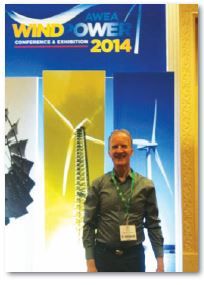Hunting season

Drew Robb Editor-in-Chief[/caption]
GE’s deal to buy Alstom makes for a very interesting turbomachinery landscape. This hands the company a much needed steam turbine presence, nicely filling out its combined cycle capabilities. Other OEMs have been active, too. Siemens has acquired Rolls-Royce GT assets, which adds aeroderivatives to its product range, as well as strengthening its position in oil & gas.
Meanwhile Mitsubishi now has access to Hitachi and Pratt & Whitney turbines, making it much stronger in small turbines and aeroderivatives while boosting its visibility in the Americas. Even Ansaldo has gotten in on the act, forming a partnership with a Chinese firm to bolster its position.
Where is all this heading? It seems the big have gotten bigger and we are set for a large OEM “Game of Thrones.” Hopefully, this turbomachinery “hunting season” won’t be as bloody as the TV series. You can read more details of the wheeling and dealing in our News section.
Among the many news stories are some show reports. We visited PowerGen EU where the keynote discussed the problems facing power generation in Europe. And a trip to the American Wind Energy Association’s annual show in Vegas highlighted the volatility of renewables. This year’s event had a fraction of the attendance of previous years, a mirror of the sharp decline in wind installations of late as subsidies expired.
Our cover story addresses extreme coatings. It is all about the latest in thermal barrier coatings (TBCs) and other surface technologies. This is sure to be an area of frequent innovation for many years to come.

Further stories address heat recovery steam generators, vibration sensors, bearing rotor dynamics, selecting control systems, reducing spiral vibration in gensets, mechanical carbon seals, and short- versus long-term validation of turbomachinery.
Additionally, we have introduced a new element. Our “Featured Turbine” section will showcase various models, focusing initially on those that perhaps have been less in the limelight than others. We start with the Titan 250 from Solar Turbines. But our New Products section also carries an announcement that Opra has released a new model.
As we have just returned from the ASME’s International Gas Turbine Institute event in Dusseldorf, you will have to wait until the next issue to read about the many interesting matters on discussion there. This included wet gas compression, LNG, coatings and subsea technology.
Enjoy the issue.
Letter to the editor:
I recently read your online article,“Back to basics, Rubbing or not?” The authors did a good job of describing “Spiral Vibrations,” which is synchronous vibration with a steadily varying phase that arises due to rub. They went astray when they said that “Morton Effect” vibrations was the same thing as Spiral Vibrations. The symptoms may be similar, but the underlying physical mechanism is entirely different. As explained by Morton and Keogh, the Morton Effect arises because: (1) For a synchronously precessing orbit, a tighter clearance exists on one face of the rotor and a larger clearance exists at the opposite side (2) Due to shearing of the fluid, the tighter-clearance side of the rotor is hotter than the looser-clearance side which bends the shaft (3) The shaft bend can increase the rotor orbit, etc. The phenomenon is well documented (De Jongh, F., and P. van der Hoeven, 1998, “Application of a Heat Barrier Sleeve to Prevent Synchronous Rotor Instability,” 27th Turbomachinery Symposium Proceedings, pp.17-26), plus other papers from the Turbomachinery Symposia (freely downloadable). My recent book, “Turbomachinery Rotordynamics with Case Studies,” discusses the phenomenon plus provides several case studies for both Spiral Vibrations and Morton Effect.
Keep up the good work.
Dr. Dara Childs, Director, Turbomachinery Lab, Texas A&M